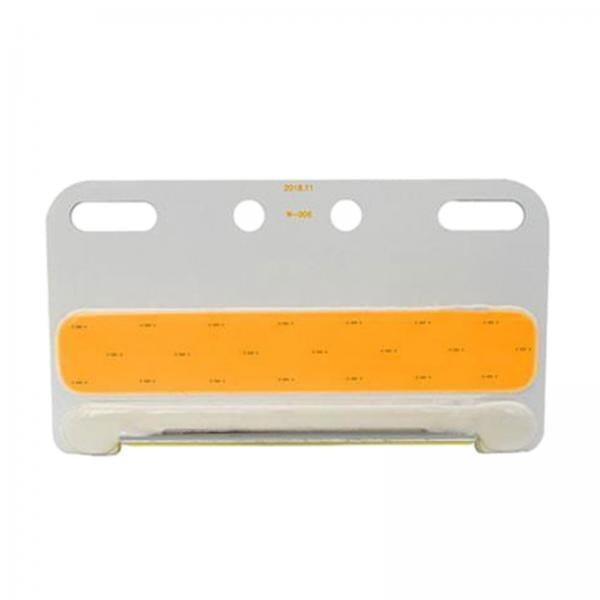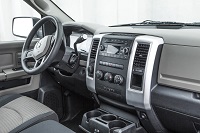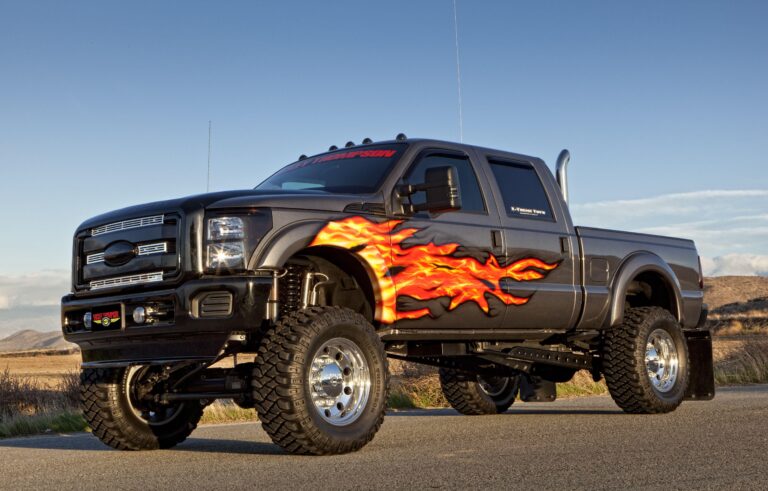Semi Trailer RV Conversion: Unlocking the Ultimate Mobile Living Space
Semi Trailer RV Conversion: Unlocking the Ultimate Mobile Living Space cars.truckstrend.com
The allure of the open road combined with the comforts of home has long captivated adventurers and those seeking a unique lifestyle. While traditional RVs offer mobility, they often come with limitations in space, durability, and customization. This is where the Semi Trailer RV Conversion emerges as a revolutionary concept, transforming robust commercial semi-trailers into expansive, highly personalized mobile residences.
A Semi Trailer RV Conversion involves meticulously retrofitting a standard freight trailer – typically a dry van or reefer (refrigerated) trailer – into a fully functional recreational vehicle. This process redefines the boundaries of RV living, offering unparalleled square footage, structural integrity, and the freedom to design a living space truly tailored to individual needs and desires. From full-time travelers and large families to those seeking a robust base for remote work or a mobile workshop, the Semi Trailer RV Conversion represents the pinnacle of customized, durable, and spacious nomadic living. Its growing popularity stems from the promise of a truly unique home on wheels, built to withstand the rigors of the road while providing all the amenities of a stationary dwelling.
Semi Trailer RV Conversion: Unlocking the Ultimate Mobile Living Space
Why Choose a Semi Trailer RV Conversion? Unmatched Advantages
Opting for a Semi Trailer RV Conversion over a conventional RV or even a bus conversion comes with a host of compelling benefits:
- Unparalleled Space and Layout Flexibility: This is arguably the most significant advantage. With lengths typically ranging from 40 to 53 feet and generous widths, semi-trailers offer a vast, open canvas. This allows for multi-room layouts, dedicated bedrooms, large living areas, full-sized kitchens, multiple bathrooms, and even integrated garage spaces for vehicles or equipment. Imagine a lofted master bedroom, a dedicated office, and a spacious entertainment area – all within your mobile home.
- Durability and Longevity: Semi-trailers are built to endure millions of miles and carry tens of thousands of pounds of cargo. Their robust steel frames and sturdy aluminum or fiberglass skins are designed for heavy-duty use, making them incredibly durable and long-lasting as RVs. This inherent strength translates to a safer, more resilient structure capable of withstanding diverse weather conditions and extended travel.
- Cost-Effectiveness (Per Square Foot): While the initial conversion cost can be substantial, when compared to the price per square foot of a new, large Class A motorhome or fifth-wheel, a Semi Trailer RV Conversion often presents a more economical solution for achieving vast living space. Used trailers can be acquired for relatively low prices, making the raw material for your dream RV quite affordable.
- Ultimate Customization Potential: Unlike mass-produced RVs with predetermined layouts, a Semi Trailer RV Conversion is a blank slate. Every inch can be designed and built to your exact specifications, from the placement of windows and doors to the choice of appliances, finishes, and interior configurations. This level of personalization is simply not possible with off-the-shelf RVs.
- Enhanced Off-Grid Capability: The expansive roof space of a semi-trailer is ideal for installing large solar panel arrays, enabling extensive off-grid power generation. Similarly, the ample undercarriage space can accommodate large fresh, grey, and black water tanks, as well as significant battery banks, extending your autonomy far beyond typical RV capabilities.

Planning Your Semi Trailer RV Conversion: The Foundation for Success
A successful Semi Trailer RV Conversion hinges on meticulous planning and understanding the foundational aspects before cutting the first hole.
Choosing the Right Trailer
- Dry Van vs. Reefer: Dry vans are simpler and generally cheaper, offering a straightforward shell. Reefer trailers (refrigerated) come with superior insulation built-in, which can save significant time and cost on the insulation phase, but they may require more effort to remove the existing refrigeration unit and repair any penetrations.
- Length and Height: Consider your towing vehicle, desired interior space, and maneuverability. Common lengths are 40 to 53 feet.
- Condition: Thoroughly inspect for rust, leaks, structural damage, tire condition, and brake functionality. A clean title is essential.

Legal & Regulatory Considerations

This is a critical, often overlooked, aspect of Semi Trailer RV Conversion.
- Weight Limits & DOT Regulations: While your converted trailer will likely be lighter than a loaded commercial trailer, you must be aware of gross vehicle weight rating (GVWR) and gross combined vehicle weight rating (GCVWR) limitations for your towing vehicle.
- Licensing: In many states, if the converted trailer’s GVWR (often exceeding 10,000 lbs) or combined vehicle weight exceeds certain thresholds, a non-commercial Class A driver’s license (not a full CDL) may be required. Research your specific state’s requirements.
- Insurance: Insuring a converted semi-trailer can be challenging. Many standard RV insurers may not cover it. You might need specialized "home-built" or "modified vehicle" insurance.
- Titling and Registration: This is paramount. You will need to re-title the trailer from a "commercial trailer" to a "recreational vehicle" or "house trailer" to avoid commercial regulations and obtain appropriate registration. This process varies significantly by state and often requires inspections to verify it meets RV definitions (e.g., permanent sleeping, cooking, and sanitary facilities).
Budgeting Your Dream Conversion
Costs can vary wildly. A detailed budget is essential:
- Trailer Acquisition: $3,000 – $25,000 (used).
- Materials: Insulation, lumber, electrical components, plumbing, appliances, finishes – this can range from $10,000 for a very basic DIY build to $70,000+ for high-end materials and systems.
- Tools: If you’re DIYing, factor in tools you don’t own.
- Professional Labor: If you hire out aspects like welding, electrical, or plumbing, this can add $10,000 – $50,000+ to the cost.
- Towing Vehicle: A heavy-duty truck (e.g., F-350/450, Ram 3500/4500, Chevy/GMC 3500/4500 dually) is non-negotiable. If you don’t own one, factor in its cost.
- Contingency: Always budget an additional 10-20% for unexpected issues.
The Conversion Process: A Step-by-Step Guide
The actual Semi Trailer RV Conversion process is a multi-phase project, demanding patience and a variety of skills.
Phase 1: Preparation & Shell Work
- Cleaning & Inspection: Thoroughly clean the interior and exterior. Inspect for rust, leaks, and any structural weaknesses. Address any necessary repairs.
- Exterior Modifications: Precisely cut openings for windows, doors (RV entry door), roof vents, and skylights. If planning slide-outs, this is where that complex fabrication would occur.
- Insulation: Crucial for climate control. Options include spray foam (excellent R-value, fills all gaps), rigid foam boards, or traditional fiberglass batts. A well-insulated trailer will be comfortable in extreme temperatures and reduce energy consumption.
- Subfloor & Framing: Level the existing floor if needed. Install a robust subfloor (e.g., plywood over sleepers) for proper support and insulation. Begin framing interior walls using wood or light-gauge steel studs to define rooms.
Phase 2: Utilities & Systems Integration
This phase requires careful planning and often professional assistance for safety-critical systems.
- Electrical System: Design a comprehensive system including 12V DC for RV appliances and lighting, and 120V AC for residential-style outlets and appliances. This involves running wiring, installing breaker panels, an inverter/charger, and a robust battery bank (Lithium Iron Phosphate – LiFePO4 are popular for their longevity and power). Solar panels are highly recommended for off-grid capabilities.
- Plumbing System: Install fresh, grey, and black water tanks. Run PEX or similar tubing for hot and cold water lines to the kitchen, bathroom, and outdoor shower (if desired). Install a water pump, accumulator tank, and a water heater (tankless or tank-based).
- HVAC System: Plan for both heating and cooling. Options include mini-split AC units (efficient for cooling), propane furnaces, diesel heaters, or even wood stoves for heating. Multiple units may be necessary for such a large space.
- Propane System (if applicable): If using propane for cooking, heating, or water heating, install a safe, well-vented propane locker and run certified lines to appliances. This requires strict adherence to safety codes.
Phase 3: Interior Finishing & Furnishing
This is where your vision truly comes to life.
- Walls & Ceiling: Install interior wall and ceiling panels (e.g., plywood, shiplap, FRP). Paint or finish as desired.
- Flooring: Lay down your chosen flooring – vinyl plank, laminate, or even hardwood are popular choices.
- Kitchen: Install cabinets, countertops, sink, and appliances (RV-specific or residential, depending on your power system).
- Bathroom: Install shower pan and surround, toilet (composting, cassette, or flush), and vanity with sink.
- Sleeping Areas: Build or install bed frames, complete with storage solutions.
- Living Areas: Install seating, dinettes, entertainment centers, and any other built-in furniture.
- Storage Solutions: Maximize every nook and cranny with clever storage, shelves, and cabinets.
Important Considerations & Potential Challenges
While rewarding, a Semi Trailer RV Conversion is not without its hurdles:
- Weight Distribution: Proper weight distribution is crucial for safe towing and handling. An unevenly loaded trailer can be dangerous.
- Towing Vehicle: As mentioned, a heavy-duty truck is non-negotiable. Ensure its towing capacity and payload can handle the converted trailer.
- Maneuverability: A 53-foot trailer is long. Navigating tight turns, city streets, and smaller campgrounds requires skill and practice.
- Finding Parking/Campsites: Many traditional RV parks have length restrictions. You may need to seek out larger sites, state parks, or boondocking locations.
- Resale Value: While unique, the market for converted semi-trailers is niche. Resale may be slower and require finding the right buyer.
- Time & Skill Commitment: A DIY Semi Trailer RV Conversion is a monumental undertaking, often taking months or even years. It requires a diverse skill set in carpentry, electrical, plumbing, and welding.
Tips for a Successful Semi Trailer RV Conversion
- Plan Meticulously: Spend ample time on design, layout, and system schematics before you start. Use CAD software or detailed sketches.
- Research Thoroughly: Understand building codes, RVIA standards (even if not certifying), and state-specific regulations for titling and licensing.
- Prioritize Safety: Especially for electrical and propane systems, if unsure, hire certified professionals. Safety should never be compromised.
- Don’t Skimp on Insulation: It’s a critical investment for comfort and energy efficiency, paying dividends in the long run.
- Join Online Communities: Leverage the knowledge of experienced semi-trailer converters on forums and social media groups.
- Start Small (if DIY): If new to major DIY projects, consider tackling smaller, simpler aspects first to build confidence.
Semi Trailer RV Conversion Estimated Price Table
The cost of a Semi Trailer RV Conversion varies significantly based on the trailer’s condition, the extent of DIY versus professional labor, and the quality of materials and systems chosen. This table provides estimated ranges for a comprehensive conversion.
| Category | Item/Service | Estimated Cost Range (USD) | Notes |
|---|---|---|---|
| I. Base Trailer | Used Dry Van Trailer (40-53 ft) | $3,000 – $15,000 | Varies greatly by condition, age, and location. |
| Used Reefer Trailer (40-53 ft) | $8,000 – $25,000 | Better insulation, but more work to remove refrigeration unit. | |
| II. Shell & Structure | Windows (RV type, qty 6-10) | $1,500 – $4,000 | RV windows are common, custom windows can be more. |
| RV Door (Entry door) | $300 – $1,000 | RV specific doors with screen. | |
| Insulation (Spray foam, rigid foam, fiberglass) | $2,000 – $8,000 | Crucial for climate control; spray foam is premium but effective. | |
| Subfloor (Plywood, leveling material) | $500 – $1,500 | Foundation for interior flooring. | |
| Framing (Wood or light gauge steel) | $500 – $2,000 | For interior walls and partitions. | |
| Roof Vents/Skylights | $200 – $800 | Essential for ventilation and natural light. | |
| III. Utility Systems | Electrical System: | ||
| – Solar Panels (600W-2000W+) | $1,000 – $6,000+ | Depends on desired off-grid capability. | |
| – Inverter/Charger (3000W-5000W) | $800 – $3,000 | Converts DC to AC; charge batteries from shore power. | |
| – Batteries (Lithium Iron Phosphate – LiFePO4) | $2,000 – $10,000+ | Most expensive component, multiple batteries needed for larger loads. | |
| – Wiring, Breaker Panel, Outlets, Switches | $500 – $2,000 | Includes all electrical infrastructure. | |
| – Shore Power Inlet | $50 – $150 | For connecting to campground power. | |
| Plumbing System: | |||
| – Fresh Water Tank (100-200+ gallons) | $200 – $800 | Larger capacity needed for long trips. | |
| – Grey Water Tank (100-200+ gallons) | $200 – $800 | For sink/shower wastewater. | |
| – Black Water Tank (40-80 gallons) | $150 – $500 | For toilet waste. | |
| – Water Pump, Accumulator, PEX Tubing, Fittings | $300 – $1,000 | Essential for water pressure. | |
| – Water Heater (Tankless or 6-10 gal) | $300 – $1,000 | Propane, electric, or diesel. | |
| – Toilet (RV/Composting/Incinerating) | $150 – $1,500 | Varies by type and features. | |
| HVAC System: | |||
| – AC Unit(s) (Mini-split or RV rooftop) | $1,000 – $4,000+ | Multiple units may be needed for large trailers. | |
| – Heating (Propane furnace, Diesel heater, Wood stove) | $500 – $3,000 | Consider climate and fuel source. | |
| IV. Interior Finishing | Walls & Ceiling Panels | $1,000 – $4,000 | Plywood, shiplap, FRP, etc. |
| Flooring (Vinyl plank, laminate, wood) | $800 – $3,000 | Durable and easy to clean options. | |
| Kitchen Cabinets & Countertops | $1,000 – $5,000+ | Custom or pre-fabricated. | |
| Kitchen Appliances (Fridge, Stove/Oven, Microwave) | $1,000 – $4,000 | RV-specific or residential appliances. | |
| Bathroom Shower Pan & Surround | $300 – $1,500 | Pre-fabricated or custom tiled. | |
| Bathroom Vanity & Sink | $200 – $800 | ||
| Lighting Fixtures (LED) | $200 – $1,000 | Energy efficient. | |
| Furniture (Bed frame, Couch, Dinette) | $500 – $3,000 | Can be DIY built-ins or purchased. | |
| V. Miscellaneous & Labor | Tools & Supplies | $500 – $3,000 | For DIY projects, can be higher if starting from scratch. |
| Professional Labor (if hiring) | $10,000 – $50,000+ | Highly variable, can significantly increase cost. | |
| Permits, Inspections, Registration Fees | $200 – $1,000 | Varies by state/local regulations. | |
| Contingency (10-20% of total) | Add to Subtotal | Essential for unexpected issues. | |
| Total Estimated Cost Range | DIY (Basic – Mid-Range) | $15,000 – $60,000 | Assumes significant DIY labor. |
| Professional Build (Mid-Range – High-End) | $60,000 – $200,000+ | Varies based on level of luxury and customization. |
Frequently Asked Questions (FAQ) about Semi Trailer RV Conversion
Q: Do I need a CDL to drive a Semi Trailer RV Conversion?
A: In most U.S. states, if your converted trailer is re-titled as an RV and its Gross Vehicle Weight Rating (GVWR) is below 26,001 lbs, you typically do not need a Commercial Driver’s License (CDL). However, you may need a non-commercial Class A license, especially if the trailer’s GVWR is over 10,000 lbs or the combined vehicle weight exceeds 26,001 lbs. Always check your specific state’s Department of Motor Vehicles (DMV) regulations.
Q: How much does a Semi Trailer RV Conversion cost?
A: As detailed in the table above, costs can range widely. A basic DIY conversion might start around $15,000-$30,000, while a high-end, professionally built Semi Trailer RV Conversion with all the amenities could easily exceed $200,000. The primary cost drivers are the trailer’s condition, the complexity of your design, and the extent of professional labor hired.
Q: How long does a Semi Trailer RV Conversion take?
A: For a dedicated DIY builder, a comprehensive Semi Trailer RV Conversion can take anywhere from 6 months to 2 years, depending on skill level, available time, and project complexity. Professional conversions can be completed faster, often within 3-12 months, but at a significantly higher cost.
Q: Where can I park a Semi Trailer RV Conversion?
A: Parking can be a challenge due to their large size. Many traditional RV parks have length limits (often 40-45 feet). You’ll likely find more success in state parks, national parks (which often have longer pull-through sites), private campgrounds designed for larger rigs, or through boondocking (dispersed camping on public lands) where space is less restrictive.
Q: Are Semi Trailer RV Conversions legal?
A: Yes, they are legal, but require proper titling and registration. The key is to re-title the commercial trailer as a "recreational vehicle" or "house trailer" in your state. This usually involves demonstrating that it contains permanent living facilities (sleeping, cooking, sanitary). Failure to re-title can result in commercial vehicle regulations and fines.
Q: Can I live in a Semi Trailer RV Conversion full-time?
A: Absolutely! Many individuals and families choose Semi Trailer RV Conversion for full-time living precisely because of the immense space, durability, and customization options it offers, making it feel more like a permanent home than a typical RV.
Q: What kind of truck do I need to tow it?
A: You will need a heavy-duty pickup truck, specifically a dually (dual rear wheels) model from the 3500/350/3500HD or 4500/450/4500HD series (e.g., Ford F-350/F-450, Ram 3500/4500, Chevrolet/GMC 3500/4500). These trucks are designed to handle the significant weight and length of a converted semi-trailer.
Q: Is it difficult to insulate a semi-trailer?
A: Insulating a semi-trailer can be challenging due to its ribbed walls and large volume. Spray foam insulation is often considered the most effective and easiest for filling all cavities, but it requires specialized equipment or professional application. Rigid foam boards are a DIY-friendly alternative but require precise cutting and sealing to prevent thermal bridging. Proper insulation is vital for comfort and energy efficiency.
Conclusion: Your Mobile Masterpiece Awaits
The Semi Trailer RV Conversion stands as a testament to ingenuity and the desire for ultimate freedom on the road. It’s a journey that demands significant investment in time, resources, and skill, but the rewards are profound. From the unparalleled living space and robust construction to the boundless customization possibilities, a Semi Trailer RV Conversion offers a unique and highly personalized mobile living experience unmatched by conventional RVs. While challenges exist in terms of planning, regulations, and the sheer scale of the build, for those committed to creating their dream home on wheels, the Semi Trailer RV Conversion truly allows for the creation of a mobile masterpiece. It’s more than just a vehicle; it’s a foundation for a life of expansive adventure, comfort, and self-expression.





